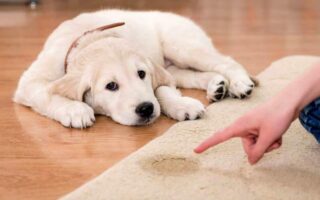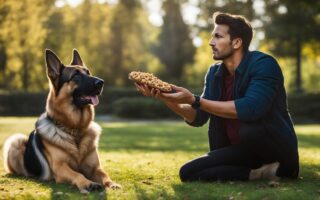Title: Rediscovering Bathroom Etiquette: A Guide to Potty Training Older Dogs
Introduction:
Welcoming an older dog into your home can be a profoundly rewarding experience, filled with moments of companionship and joy. However, it can also come with unique challenges, one of the most common being potty training. Unlike puppies, older dogs come with established habits—some good, some not so much. Perhaps they were previously in a loving but unstructured environment, or maybe they’ve been left to their own devices for too long. Regardless of the circumstances, the journey to successful potty training can be navigated with patience, understanding, and a well-crafted approach. In this article, we will explore effective strategies for reintroducing bathroom etiquette to your seasoned canine companion, ensuring a harmonious life together in your home. With the right tools and techniques, you can foster a positive learning experience that respects your dog’s maturity while paving the way for a stress-free routine.
Table of Contents
- Understanding the Roots of Potty Issues in Older Dogs
- Creating a Consistent Routine for Successful Potty Training
- Choosing the Right Tools and Techniques for Your Senior Dog
- Positive Reinforcement: Building Confidence During Training
- Q&A
- Wrapping Up
Understanding the Roots of Potty Issues in Older Dogs
As dogs age, their bodies undergo various changes that can contribute to potty issues. Physical health is a prominent factor, as conditions such as arthritis can hinder a dog’s ability to go outside on time. Additionally, cognitive decline may lead to confusion around established routines, thus impacting their understanding of when and where to relieve themselves. Owners should remain attuned to their pets’ behavioral changes, as these could signify underlying health concerns that warrant veterinary attention.
It’s essential to consider the environmental aspects affecting older dogs. Factors such as stress, changes in household dynamics, or the introduction of new pets can lead to anxiety, prompting potty accidents. Consistency in routines can help alleviate some of this anxiety. Owners should also explore beneficial strategies such as:
- Establishing regular potty breaks
- Utilizing indoor potty options, like pads or grass boxes
- Creating a quiet space for the dog to relieve itself
Furthermore, proper nutrition and hydration can influence toilet habits. Monitoring food and water intake helps maintain digestive health, potentially reducing accidents.
| Common Causes | Potential Solutions |
|---|---|
| Health Issues | Regular vet check-ups |
| Cognitive Decline | Structured routines and cues |
| Changes in Environment | Stress-reducing techniques |
| Dietary Factors | Balanced diet and hydration |
Creating a Consistent Routine for Successful Potty Training
Establishing a consistent potty training routine is critical for older dogs, as it helps them understand when and where it’s appropriate to relieve themselves. Start by taking your dog outside at regular intervals throughout the day, keeping in mind their meal schedule. Dogs thrive on routine, so aim for the same times daily for bathroom breaks. Here are some key points to include in your routine:
- Early Morning: Take your dog out immediately after waking.
- Post-Meal: Wait about 15-30 minutes after meals for bathroom time.
- Midday Break: Schedule a break in the afternoon to reinforce the habit.
- Evening Routine: As bedtime approaches, give your dog another opportunity to go outside.
In addition to scheduled breaks, be mindful of your dog’s behavior—signs such as sniffing or circling can indicate the need to go. Create a positive reinforcement system where your dog receives praise or a small treat every time they go outside successfully. This will help to solidify the new habit. Here’s a simple table that outlines different activities and their impact on potty training:
| Activity | Impact |
|---|---|
| Consistent Feeding Times | Leads to predictable bathroom breaks |
| Frequent Outdoor Breaks | Reinforces good behavior and habits |
| Positive Reinforcement | Encourages repeat behavior in the future |
| Monitoring Signs | Helps prevent accidents indoors |
Choosing the Right Tools and Techniques for Your Senior Dog
When embarking on the journey of potty training an older dog, selecting the appropriate tools and techniques can significantly impact success. Understanding that senior dogs may come with their own unique set of challenges is crucial. Start by gathering essential supplies such as:
- High-Quality Pads: Look for absorbent, leak-proof pads designed specifically for potty training.
- Crate or Enclosure: A safe, comfortable space can help establish boundaries and routines.
- Potty Training Bell: Teaching your dog to use a bell to signal when they need to go outside can build communication skills.
- Treats and Rewards: Keep a stash of tasty treats ready for encouraging desired behavior.
In addition to tools, techniques play a pivotal role in the process. Understanding your dog’s routine and patterns is essential, allowing you to tailor your approach to fit their needs. Consider implementing the following strategies:
| Technique | Description |
|---|---|
| Consistent Schedule | Take your dog out at the same times each day to build a reliable routine. |
| Positive Reinforcement | Reward your dog immediately after they go outside to reinforce the behavior. |
| Supervised Freedom | Allow free roam only when you can supervise, ensuring they don’t stray away from potty spots. |
Positive Reinforcement: Building Confidence During Training
Implementing positive reinforcement during potty training can significantly boost your older dog’s confidence. Whenever your furry friend successfully goes outside, shower them with affection and praise. You might say a simple “good boy” or “good girl,” coupled with a gentle pet or a special treat. This approach not only encourages them to repeat the behavior but also helps them associate potty time with positive experiences. The excitement in your voice and the warmth of your touch convey to your dog that they are making progress, building their trust in you as their trainer.
To effectively use positive reinforcement, consistency is key. Create a habit of rewarding your dog immediately following the desired behavior. Consider using a few strategies to enhance this experience:
- Treats: Use small, tasty treats that your dog loves, focusing on those they don’t receive at other times.
- Verbal Praise: Accompany treats with enthusiastic verbal praise to amplify their excitement.
- Playtime: Incorporate a few minutes of play as a reward, letting them know that potty success leads to fun.
To track your dog’s progress and adjust your training strategy as necessary, consider using the following table:
| Date | Successes | Notes |
|---|---|---|
| 10/01 | 3 | Used treats and praise |
| 10/02 | 5 | Improved behavior |
| 10/03 | 4 | Shortened intervals |
Using this method, you not only teach your dog where to relieve themselves, but you also instill a sense of self-worth and security, making them more eager to learn and participate in the training process.
Q&A
Q&A: Potty Training Older Dogs
Q1: Is it too late to potty train an older dog?
A: Not at all! While younger dogs may adapt a bit faster, older dogs are just as capable of learning new habits. With patience, consistency, and positive reinforcement, you can teach your older canine companion to navigate new potty routines.
Q2: What challenges might I face when potty training an older dog?
A: Older dogs may have ingrained habits or medical issues that complicate the process. Some common hurdles include arthritis, cognitive decline, or even urinary incontinence. It’s important to assess any physical limitations first and consult a vet if you notice any concerning symptoms.
Q3: How can I prepare my home for potty training an older dog?
A: Creating a conducive environment is key! Designate a specific potty area outside and take your dog there consistently. Use pads indoors if necessary, and eliminate any lingering odors from previous accidents to prevent confusion. Make sure to also clear pathways for easy access, especially for dogs with mobility issues.
Q4: What’s the best method for teaching an older dog to go outside?
A: Start with a consistent schedule! Take your dog outside first thing in the morning, after meals, and before bedtime. Use a designated command, like “go potty,” to reinforce the behavior. When your dog goes outside, praise them enthusiastically and offer treats as a reward.
Q5: How do I handle accidents indoors?
A: Accidents happen, even in the best of training scenarios. When cleaning up, avoid scolding your dog; this can create anxiety. Instead, use an enzymatic cleaner to completely remove any odors. If accidents occur frequently, reassess the training routine or consult a vet to rule out any health issues.
Q6: How long should I expect the potty training process to take?
A: The timeline for potty training can vary widely based on the individual dog and their history. Some dogs may catch on in just a few days, while others might take several weeks. Consistency and patience are essential, so celebrate small victories along the way!
Q7: Are there any tools or products that can help with potty training older dogs?
A: Yes, there are several useful tools! Consider using belly bands for male dogs, which prevent accidents indoors. For females, puppy pads can serve as a helpful alternative when getting outside isn’t immediately possible. There are also specialized training aids available that can act as additional incentives for your dog.
Q8: What if my older dog seems resistant to potty training?
A: Resistance may stem from fear, discomfort, or simply unfamiliarity. Take a step back and evaluate your approach. Ensure your dog feels safe and comfortable in their potty training environment. Sometimes, a little extra time and gentle encouragement can go a long way.
Q9: Can I train an older dog if they have specific health concerns?
A: Absolutely! However, modifications might be necessary. For dogs with mobility issues, ensure they have easy access to their potty area. For those with cognitive problems, establishing a routine and using visual or verbal cues will help. Always consult your vet for tailored advice to accommodate any health conditions your dog may have.
Q10: Any parting words of wisdom for someone embarking on this journey?
A: Potty training an older dog requires understanding and compassion. Remember that every dog is unique, and patience is your best ally. Validate their progress with plenty of praise and enjoy the bonding experience that comes with training. With a little bit of love and effort, you’ll see positive results together!
Wrapping Up
In the journey of potty training an older dog, patience is indeed a virtue, and understanding is your most valuable tool. Remember, every dog is unique, carrying with them their own history and habits. Embrace the ups and downs with a steady heart, and celebrate each success, no matter how small. With time, consistency, and a sprinkle of compassion, you can help your furry companion achieve newfound freedom and comfort in your home. As you navigate this process together, you will not only create a cleaner living space but also strengthen the bond of trust between you and your four-legged friend. So, gather your supplies, set your intentions, and embark on this rewarding adventure—the best is yet to come!


